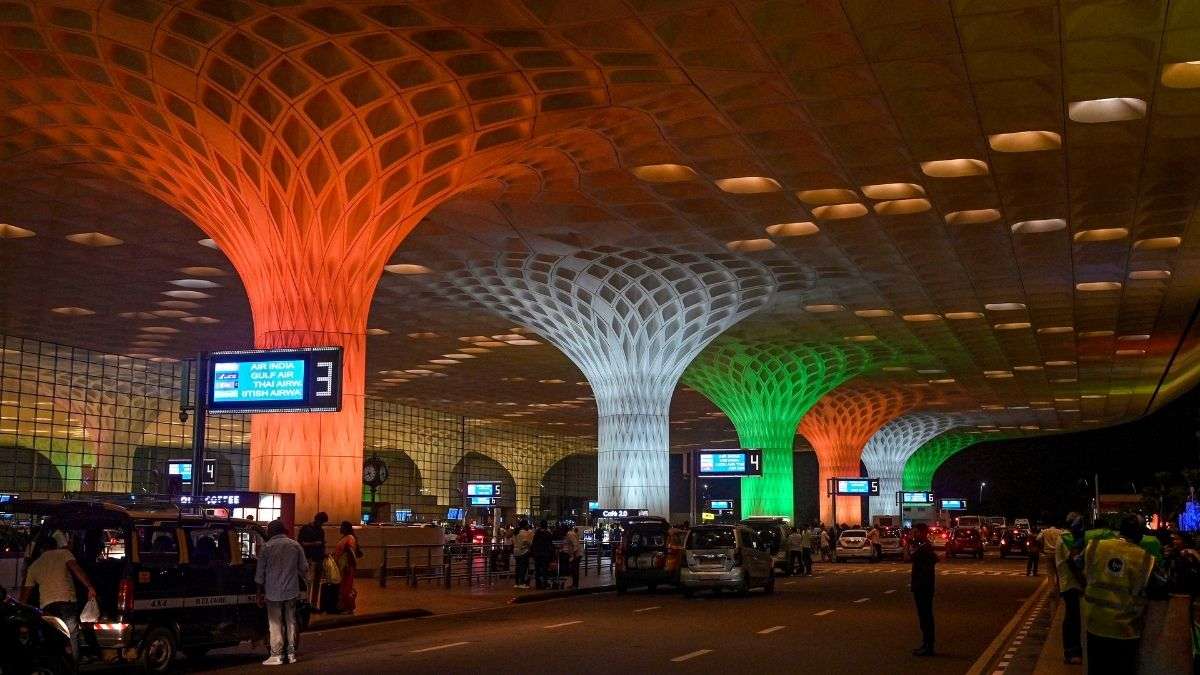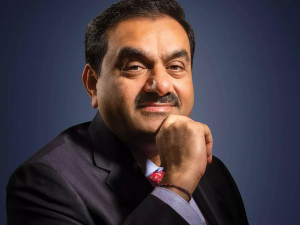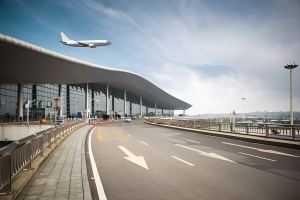Chhatrapati Shivaji Maharaj International Airport (IATA: BOM, ICAO: VABB) is an international airport that serves Mumbai and the Mumbai Metropolitan Region. It is the second busiest airport in India in terms of total and international passenger traffic after Delhi, and it was the 14th busiest airport in Asia and the 28th busiest airport in the world in fiscal year 2022.
The airport is operated by Mumbai International Airport Limited (MIAL), a joint venture between Adani Enterprises, an Adani Group subsidiary, and the Airports Authority of India.
Properties Near Mumbai International Airport
1) Kolte Patil Jai Vijay
Kolte Patil Jai Vijay’s prime location is a significant advantage for prospective homebuyers. Kolte Patil Jai Vijay provides 1, 2, 3, and 4 BHK Flats in Vile Parle East, Mumbai. Visit IndexTap now to view prices, floor plans, master plans, amenities, agreement values, and photos!
2) Naman Premier
Naman Premier is a residential project in Andheri East, Mumbai, developed by the Naman Group, one of India’s top real estate developers. The project offers affordable apartments in a variety of configurations, including 1 and 2 BHK. The average price per square foot for the apartments is Rs 27,300.
The same day, the public gained access to a dedicated six-lane elevated road connecting the new terminal to the main arterial Western Express Highway. The airport provides nonstop and connecting flights to all six inhabited continents.
The airport is named after Shivaji (1630-1680), a 17th-century Chhatrapati of the Maratha Empire. It was renamed in 1999 from “Sahar Airport” to “Chhatrapati Shivaji International Airport” (the title “Maharaj” was added on August 30, 2018). It is situated in Vile Parle East, between the Santacruz and Sahar Village suburbs.
History of Mumbai Airport
RAF Santacruz was built during the 1930s. From 1942 to 1947, it was a larger airfield than nearby Juhu Aerodrome and served as home to several RAF squadrons. Originally, the airport had three runways and covered approximately 1,500 acres (610 ha).The apron was located on the south side of runway 09/27, and the area now known as the “Old Airport” houses Air India, Air Works India, Indamer Aviation Pvt Ltd, and MIAL’s General Aviation Terminal, among other things.
By 1946, when the RAF began handing over the airfield to the Director General of Civil Aviation for civil operations, two old abandoned Royal Air Force hangars had been converted into a passenger terminal. One hangar served as a domestic terminal, while the other handled international traffic. Customs and immigration counters were on either side, with a lounge in the centre. Air India handled passengers in its own terminal located between the two hangars. In its first year, it provided six civilian services per day.
After Karachi was partitioned to Pakistan, traffic at the airport increased, with up to 40 daily domestic and foreign services operating by 1949, prompting the Indian government to develop the airport, equipping it with a night landing system comprising a radio range and a modernised flare path lighting system. Construction on a new passenger terminal and apron began in 1950 and was completed in 1958. The new airport, named after the neighbourhood in which it stood, was initially managed by the Public Works Department before being taken over by the Ministry of Civil Aviation.
With the introduction of the jumbo jet era in the 1970s, Santacruz, despite several extensions, began to experience insufficient operational capacity. The Santacruz terminal was originally designed to accommodate 600 passengers at a time, but by the late 1970s, it was handling 1,200. In 1979-80, 5 million domestic and international passengers flew through Santa Cruz, compared to 3 million at Delhi’s Palam Airport, Airlines were constantly expanding their services, but there was no corresponding increase in terminal space, leaving it the most congested airport in the country. In one of its issues, Time magazine referred to the terminal building as a “black hole” due to the chaos. On September 21, 1979, a major fire engulfed the International section of the terminal building, killing three passengers and closing the airport. In October of that year, a temporary departure extension known as the “Gulf Terminal” became operational until the terminal was repaired.
The Tata Committee, established in 1967 to investigate airport issues, recommended the construction of a new international terminal to meet traffic demands in the 1970s. The Santa Cruz terminal was only intended to handle domestic traffic. The International Airport Authority of India (IAAI), established in 1972, began planning the construction of a new terminal building for international passenger traffic that would be completed by 1981. The new international terminal at Sahar, located northeast of Santacruz in Vile Parle, was built at an estimated cost of ₹ 110 million, The construction of the new international terminal at Sahar began in November 1977, with the first phase taking three years. Sahar Terminal 2A, the first of the three terminals, opened on December 5, 1980.
AAI began considering modernization of Bombay Airport in 1996, but the AAI board approved a modernization proposal only in 2003. By then, Bombay and Delhi airports handled 38% of the country’s aircraft movement and accounted for one-third of AAI’s total revenue. At the time, the Bombay airport handled 13.3 million passengers, 60% of whom were domestic travellers. The airport experienced severe congestion for both aircraft and passengers because it handled twice as many aircraft movements per day as it was originally designed for. The bidding process for its modernization began in May 2004, and the Empowered Group of Ministers’ (EGoM) decision was announced in January 2006. Delta Air Lines began direct flights from Mumbai to New York.
Passenger & Air Traffic
Its passenger traffic was approximately 49.8 million in 2018. It is also the second busiest airport in terms of cargo volume. In March 2017, the airport overtook London’s Gatwick Airport as the world’s busiest to operate a single runway at once. This was later surpassed by Gatwick Airport at the end of 2019 due to passenger numbers falling in Mumbai.
It handled a record 1,007 aircraft movements on December 9, 2018, surpassing its previous record of 1,003 flight movements in a day in June 2018. On September 16, 2014, it handled a record 51 movements in one hour. In fiscal year 2020, the Mumbai Airport handled 45.87 million passengers, second only to IGI’s 67.3 million in India.
Ownership of Mumbai Airport
A consortium consisting of GVK Industries, Airports Company South Africa, and Bidvest won the bid to operate Mumbai Airport. To accomplish this task, the consortium (74%) formed Mumbai International Airport Private Limited (MIAL), a joint venture with the Airports Authority of India (26%). Since then, MIAL has made numerous improvements to the aesthetics, design, and passenger conveniences at CSMIA, including the refurbishment of domestic terminals 1A and 1B, international terminals 2B and 2C, and the opening of a brand new domestic terminal 1C and new Terminal T2. MIAL also completed airside improvement projects such as the installation of new taxiways, aprons, and the reconstruction of both runways. In February 2008, MIAL signed an agreement with Air Transport IT specialist SITA, making CSIA the first airport in India to implement Common-use self-service kiosks and CUTE (Common Use Terminal Equipment) check-in systems.
In February 2021, the Adani Group, through its subsidiary Adani Enterprises, acquired both GVK and Bidvest’s stakes in MIAL, giving it a 74% controlling interest in the venture.
Runways of Mumbai International Airport
The airport has two intersecting runways and handles about 980 flights per day. The runways have been upgraded to Code F, allowing them to handle larger planes like the Airbus A380. Following a presentation by UK air traffic service provider NATS on how to increase airport capacity in March 2011, MIAL established a target of 48 aircraft movements per hour in an effort to reduce airport congestion. To achieve this goal, both runways were operated simultaneously, particularly during peak hours.
MIAL discontinued simultaneous cross-runway flight operations in mid-2013 after determining that single runway operations were more effective at increasing aircraft movements per hour. Runway 14/32 was now to be used only when the main runway was unavailable due to maintenance or other issues. The construction of new rapid exit taxiways contributed to an increase in flight handling capacity from 32 to 44 movements per hour by 2012. NATS delivered and assisted MIAL in implementing a ‘change roadmap’ to help CSMIA achieve more than 50 movements per hour in 2015. In March 2017, CSMIA overtook Gatwick Airport as the world’s busiest airport with only one operational runway at a time, thanks to increased air-side efficiencies.
| Number | Length | Width | ILS |
| 09–27 | 3,660 m (12,008 ft) | 60 metres (200 ft) | Cat. II (27); Cat. I (09) |
| 14–32 | 2,990 m (9,810 ft) | 45 metres (148 ft) | Cat. I (both directions) |
Mumbai Airport Runway Notes:
Runway 09/27, once India’s longest commercial runway, is now the airport’s main runway. It is connected to a full-length parallel taxiway to the north via 13 taxiways, four of which are rapid exit taxiways. It intersects the secondary runway to the south of the terminal buildings. The runway reconstruction began in September 2010 and was completed in May 2011. The runway width was increased from 45 metres (148 feet) to 60 metres (200 feet), with 7.5 metres of runway shoulder width added on either side. The ILS on 27 begins at 2,900 feet (880 metres) and is 9.1 nautical miles (16.9 kilometres) long, with a glide slope path of three.
Runway 14/32 has ten taxiways, three of which are rapid exit and connect to a parallel taxiway running along its eastern flank. It connects Terminals 1 and 2 and was reconstructed in 2010. The runway shoulders were widened from 7.5 to 15 metres (25 to 49 feet). The associated taxiways for the secondary runway were upgraded in 2019. A new rapid exit taxiway and the conversion of taxiways to Code-F significantly increased the runway’s capacity. In 2020, the secondary runway set a record for peak hour traffic with 47 movements per hour, compared to 36 movements per hour.
Air Control Traffic Tower of Mumbai Airport
A section of the parking area opposite terminal 1B houses India’s second tallest air traffic control tower, which stands at 87.5 metres (287 feet) after Delhi Airport (101.9 metres). The triangular three-dimensional structure with soft vertices, which won the Hong Kong Building Information Modelling (BIM) Award in 2009, has six storeys starting at 62.1 m (204 ft). The tower was inaugurated on October 18, 2013, and took over operations on January 1, 2014.
The new tower allows air traffic controllers to see 8 kilometres (5 miles) beyond the thresholds of both runways. The tower and its associated technical block and mechanical plant building have a total area of 2,884 m2 (31,040 square feet). The fully equipped tower is estimated to cost ₹4 billion.
The previous ATC tower, constructed by the Airports Authority of India (AAI) at an estimated cost of ₹2.80 billion, was operational from 1999 to 2013. During that time, many airlines, including Singapore Airlines, Saudi, Qantas, and United, avoided landing at Mumbai Airport when the secondary runway was in use because the ATC tower was too close to the runway and did not meet ICAO standards. The tower penetrated runway 14/32’s transitional obstacle limitation surfaces by more than 50 metres (for instrument approaches). The tower also obstructed the path of a parallel taxiway being built for the secondary runway. MIAL demolished the tower in 2014.
Terminals of Mumbai Airport
The airport has two scheduled commercial passenger terminals: Terminal 1 at Santacruz for domestic flights and Terminal 2 at Sahar for international and domestic flights. While both terminals share airside facilities, they are physically separated on the city side, necessitating a 15-20-minute (landside) drive between them. A dedicated General Aviation Terminal serves passengers on private and non-scheduled flight operations.
Operational Terminals of Mumbai Airport
Terminal 1
Terminal 1, also known as Santacruz Airport, serves domestic flights operated primarily by low-cost carriers. This was the original Santacruz building, Mumbai’s first passenger terminal, which was integrated but was renamed Terminal 1 after the Sahar building opened for international operations and became a domestic operations terminal. It has been renovated several times over the decades, the most recent being in the 2000s. It was further divided into Terminals 1A, 1B, and 1C following their permanent closure in the late 1990s and early 2000s, SpiceJet, Go First, and IndiGo used it, but after Jet Airways ceased operations on April 17, 2019, select flights from all Terminal 1 airlines relocated to the newer Terminal 2 building. The terminal has eleven passenger boarding bridges. In January 2017, MIAL renamed Terminal 1B to Terminal 1 to make it easier for fliers to identify. Several airlines use air-conditioned Cerita buses owned by BEST to transport passengers between terminals and aircraft.
Terminal 2
Larsen & Toubro (L&T) was awarded the contract to build the new Terminal 2 in order to distinguish it from the existing Terminal 2 building. Skidmore, Owings & Merrill (SOM) was the project’s architectural designer. SOM also provided the structural and MEP schematic designs, as well as the roof’s detailed structural design. L&T’s in-house design team, EDRC (Engineering Design and Research Centre), completed the detailed design of the foundations, the rest of the structure and civil works, the MEP, IT, and airport systems, as well as the project’s full construction documentation. The terminal has a land area of 210,000 square metres and replaces the previous International Terminal. The project was estimated to cost ₹98 billion (US$1.2 billion) and employ over 12,000 people. The X-shaped terminal has a total floor area of 450,000 square metres spread across four floors and serves both domestic and international passengers. It includes new taxiways and apron areas for aircraft parking, which will accommodate 40 million passengers per year. The structure features boarding gates on two piers that extend southward from a central processing building, as well as a 42-meter-high roof made of over 20,000 metric tonnes of fabricated steel that covers 30 acres. However, the eastern pier of Terminal 2 remains truncated due to the failure to clear slums in the adjoining plot, giving the structure an asymmetrical appearance from above. The new Terminal 2 building features Multiple Aircraft Ramp System (MARS) stands and swing gates, allowing a single stand to accommodate one wide body aircraft or two narrow body aircraft in either domestic or international configuration. The six-lane Sahar Elevated Access Road connects the new terminal with the Western Express Highway. A metro rail link to the terminal is currently under construction.
The New Terminal includes approximately 21,000 square metres of retail space, lounges, and travel services, as well as over 5,000 square metres of landscaping and a 5,000-car multi-level parking lot. SKIDATA designed and supplied the parking management and revenue control systems for the entire MLCP. There are 192 check-in counters and 60 immigration counters for departing passengers, 14 baggage carousels, and 76 immigration counters for arriving passengers, The building has 48 escalators and 75 lifts that transport passengers across its four levels. The terminal also has 42 travelators. In the first phase of development, the apron adjacent to Terminal 2 has 48 stands, including three Code F stands (for the A380). The final phase of development includes 38 Code E/F contact stands, 14 Code E/F remote stands, and 20 Code C remote stands (for a total of 72 stands).
In November 2014, the GVK Lounge opened as India’s first common luxury lounge at an airport. The lounge is available to First and Business class passengers and can accommodate up to 440 guests at one time. It spans 30,000 square feet across two levels of the terminal and includes a library, a business centre, and fine dining options, in addition to the usual amenities such as concierge services, a smoking zone, food and beverage, a bar, a luxury spa, a shower area, and a relaxation room. The luxury lounge received the ‘World’s Leading Airport Lounge – First Class 2015’ award at the World Travel Awards 2015 in Morocco.
The terminal also houses the Niranta Airport Transit Hotel, which is the country’s first 32-room hotel. It is located on Level 1 of the terminal, and passengers who have checked into the airport can book rooms. IWG plc, operating under the brand Regus, operates a shared workspace from the terminal.
The Old International Terminal closed permanently at 13:00 on February 12, 2014, and international operations began from the New Terminal 2 on the same day. Air India flight 343 (an Airbus A330-200) arrived from Singapore via Chennai, while Jet Airways flight 118 (a Boeing 777-300ER) departed for London. It was inaugurated by Manmohan Singh, the then-Prime Minister of India. Domestic operations at Terminal 2 began on January 9, 2015, with Vistara’s inaugural flight arriving from New Delhi. Vistara initially operated from Level 4 of the Terminal, which is only used by international passengers, but in July 2015, they relocated to Level 3, which will be used exclusively for domestic operations. Air India shifted all of its domestic operations from Terminal 1A to Terminal 2 on 1 October 2015, becoming the second airline to operate domestic flights from Terminal 2, to ease their International and Domestic passenger transfers, and Jet Airways shifted all of its domestic operations from Terminal 1 to Terminal 2 on 15 March 2016, facilitating a seamless transfer experience for its passengers, whereas all other domestic airlines, namely Indigo, Go First, and SpiceJet
After Jet Airways ceased operations on April 17, 2019, other carriers began operating additional domestic flights using Jet Airways’ vacated slots. These flights were operated from Terminal 2. As a result of this arrangement, some of the larger carriers were required to operate domestic flights from both terminals. Consequently, MIAL moved to streamline operations at both terminals in September 2019, shifting all of its domestic operations of Indigo, AirAsia India, and Go First back to Terminal 1, while SpiceJet shifted all of its domestic operations from Terminal 1 to Terminal.
Tata Docomo provides free Wi-Fi connectivity in both Terminals 1 and 2. However, the service has been criticized for being ineffective and complicated for international passengers, as passengers must obtain an OTP only through an Indian phone number, and the free service is only valid for 45 minutes before passengers must purchase data packs. Despite criticism, airport operators have made no changes to their wifi policy.
Key facilities at the New Terminal 2
| Facilities | Current | Earlier |
| Parking stands for aircraft | 108 | 84 |
| Boarding bridges | 60 | 25 |
| Check-in counters | 192 | 135 |
| Car parking | 5,000 | 3,600 |
Car Parking and Passenger Arrivals
All vehicles arriving at Terminal 2 to pick up arriving passengers are routed through the Multi-Level Car Park and charged a fee to alleviate airport traffic congestion. Four-wheelers pay ₹140 (US$1.80) for 30 minutes of general parking, while two-wheelers pay ₹Convert for 240 minutes.
General Aviation Terminal
The airport’s General Aviation Terminal for private and non-scheduled flight operators (NSOPs) is located in Kalina on the south-west side of the airfield. The terminal was approved for international operations in April 2011, making CSMIA the first airport in India to have a self-contained terminal capable of handling 24-hour domestic and international flight operations for private and NSOPs. The terminal accommodates passengers departing and arriving on private aircraft and business jets. The terminal features two exclusive lounges, two conference halls, two crew restrooms, and a café bar.
Old Terminals of Mumbai Airport
Terminal 1 (divided into 1A, 1B, 1C)
When the Sahar terminal opened in the 1980s, the terminal at Santacruz reverted to being a domestic one. The terminal was made up of three structures: Terminals 1A, 1B, and 1C.
Terminal 1A – Terminal 1A opened in April 1992 and was only used by Indian Airlines (now Air India). Kingfisher Airlines began operations from 1A in 2005, following an agreement with Indian Airlines to source all ground handling and terminal space. In June 2013, shortly after Kingfisher ceased operations, MIAL assigned the vacant space to GoAir. From October 1, 2015, Air India relocated all of its Terminal 1A operations to the new Terminal 2. On the same day, GoAir relocated its departure operations to Terminal 1B, forcing the closure of Terminal 1A’s departure level. However, GoAir continued to use Terminal 1A’s arrivals level until March 15, 2016, when its arrivals were also shifted to Terminal 1B Terminal 1A was shut
Terminal 1B – This was the original Santacruz building, Mumbai’s first passenger terminal, which was integrated but was renamed Terminal 1 after the Sahar building opened for international operations and became a domestic operations terminal.
Terminal 1C – Built for ₹ 3 billion, it opened in April 2010. Hafeez Contractor provided the architectural design. The structural, MEP, and IT/Airport systems were designed by EDRC, the EPC contractor Larsen & Toubro’s (L&T) in-house design team. The terminal had six passenger boarding bridges and provided connections between Terminals 1A and 1B. It covered 297,194 square feet across three levels and had a seating capacity of approximately 900 passengers. Level 1 housed MIAL’s and some airlines’ offices, while Level 2 served as the security hold area for passengers who checked in at Terminal 1A or 1B. Level 3 featured a food court. All airlines used the building exclusively for boarding. Passengers entered the facility through Terminal 1B.
In January 2017, MIAL renamed Terminal 1B to T1.
Terminal 2 (Divided into 2A, 2B, and 2C)
Terminal 2 of the airport is located in Sahar Village, Vile Parle East. Terminal 2 was designed by Aéroports de Paris and opened in January 1981 in three modular phases: 2A, 2B, and 2C. Each module had a capacity for 2.5 million annual passengers. The terminal covered an area of 120,000 m2 (1,300,000 square feet). The terminal structure was designed in a space-saving vertical layout, with separate levels for arrivals and departures. Passengers travelled to the upper level departure forecourt via a city-side flyover.
The original terminal was a convex-shaped single concourse structure with 14 Code E contact stands. The larger T2 apron also accommodated an additional 15 Code D/E and 6 Code C remote stands. This resulted in 35 stands on the existing apron. The departures section of 2A featured 42 check-in counters, 18 more than the international section at the Santacruz terminal. After clearing customs and immigration, departing passengers were led down to a mezzanine floor with five elongated nodules that connect the terminal to the aircraft via aerobridges.
Terminal 2A – The first phase of the terminal complex was completed at a cost of ₹180 million (US$2.3 million), serving most international carriers. The subcontinent’s first aerobridges were installed at boarding gates 3-8. It was decommissioned and demolished in January 2009 to make way for the new T2 building.
Terminal 2B – The project cost ₹220 million (US$2.8 million) and was completed in 1984. It served Air India and its carriers from September 1986 to October 1999 before being decommissioned when Terminal 2C opened. Following the demolition of Terminal 2A, it underwent extensive renovations and was reopened.
Terminal 2C – It was inaugurated in October 1999 and was designed specifically for Air India, Air India Express, and other carriers whose ground operations were handled by Air India.
Terminals 2B and 2C were decommissioned in February 2014, with the new T2 taking over operations. They were demolished later that year so that the rest of the new T2 could be built.
Cargo Complex in Mumbai Airport
The Air Cargo Complex, located west of International Passenger Terminal 2, has been operational since 1977. The cargo apron can handle five wide-bodied aircraft. In 2009-10, the airport processed 385,937 metric tonnes of international cargo and 165,252 metric tonnes of domestic cargo. Air India (AI) and Mumbai International Airport Pvt Ltd (MIAL) have been appointed as cargo custodians by the Central Board of Excise and Customs in Mumbai. The Cargo Terminal includes a Centre for Perishable Cargo (CPC) with an area of 1844 m2 for perishable and temperature sensitive international export shipments, strong rooms of 115 m2 for valuable cargo storage and storage areas for dangerous goods in both import and export warehouses, dedicated Unaccompanied Baggage handling and clearance areas, and 9 coloured X-ray cargo screening machines for export cargo.
MIAL handles 65% of CSIA’s international volumes and also operates a Common User Domestic Cargo Facility. After taking over the airport’s redevelopment in 2006, MIAL commissioned an offshore Common User Terminal (CUT) near the Marol pipeline as a temporary solution. In June 2016, MIAL established a new domestic cargo CUT near the Western Express Highway in Vile Parle.
Concor Air Ltd. will build, operate, and transfer the CUT. The terminal can handle 300,000 metric tonnes of cargo per year and covers an area of 60,000 square feet. The Cargo Terminal is an “elevated terminal structure” in which all arriving domestic cargo is managed from the basement level and departing cargo is handled on the upper level. Air India and Blue Dart handle their own domestic cargo operations from their respective terminals. Blue Dart opened its dedicated cargo facility at Mumbai Airport near Terminal 1 on February 7, 2019. The facility is 4,300 square meters in size and has access from both the air and the city, allowing for faster shipment transfer.
















